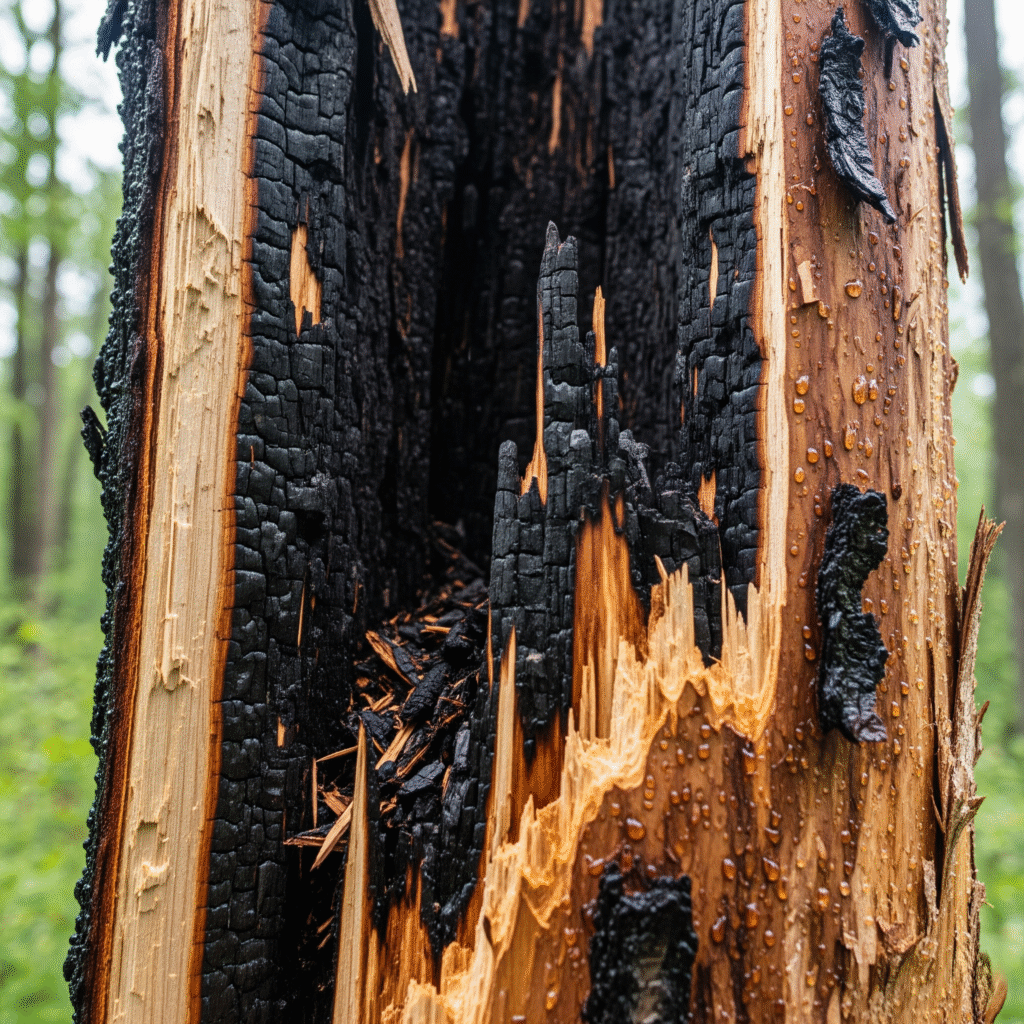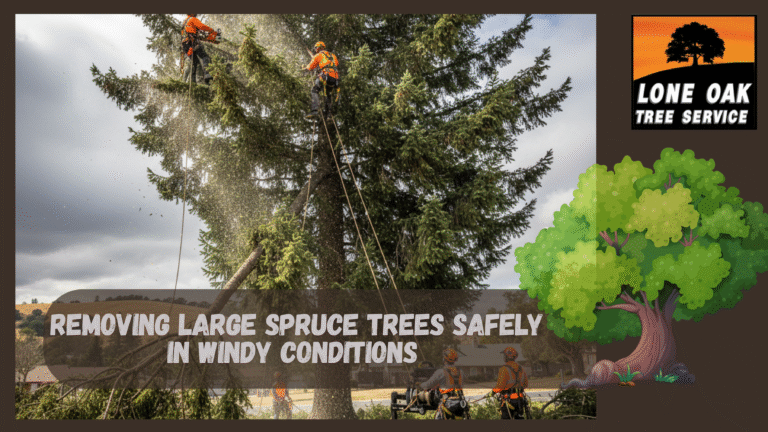Introduction
A lightning strike on a tree is more than just a dramatic natural event; it can create serious safety hazards for your property and loved ones. Trees that have been struck by lightning are often structurally compromised, making them vulnerable to falling, splitting, or dying, which can lead to major damage or injury if not dealt with promptly.
This article explores what to do immediately after a lightning strike, signs of tree damage, and how emergency tree services can help mitigate risks.
What Happens When Lightning Strikes a Tree?
Lightning carries tens of thousands of volts and can heat the air around it to over 50,000°F. When it strikes a tree:
- Sap inside the tree turns to steam, causing explosive damage.
- Bark can be blown off, exposing the trunk.
- Roots and internal structures may burn or rupture.
- Trees may split, die, or fall days or weeks after the strike.
Signs Your Tree Was Struck by Lightning
Lightning damage may not always be immediately visible. Here are some key indicators:
● Bark Stripping or Scorch Marks
Look for long, vertical scars or strips where bark has exploded or burned.
● Leaf Wilt or Burnt Foliage
Sudden browning or falling leaves, even in summer, could signal internal damage.
● Cracked or Split Trunks
Severe strikes may crack the tree trunk or main limbs, destabilizing its structure.
● Dead Limbs or Missing Branches
Pieces may be blown off during the strike or slowly die from internal injuries.

Immediate Steps After a Lightning Strike
If you suspect a tree on your property has been hit by lightning, act fast:
1. Stay Clear of the Area
Avoid standing under or near the tree until a professional evaluates it. Damaged trees may collapse without warning.
2. Call an Emergency Tree Service
Contact certified arborists or emergency tree removal professionals. Quick action can prevent accidents and property damage.
3. Inspect the Surrounding Property
Check for roof damage, fallen power lines, or debris. Take photos for insurance documentation.
Why You Need Emergency Tree Services
Lightning-struck trees are unpredictable and dangerous. Here’s how emergency services help:
● Risk Assessment
Certified arborists evaluate whether the tree can be saved or must be removed.
● Safe Removal of Hazardous Trees
Using cranes and rigging, they remove compromised limbs or entire trees without damaging nearby property.
● Disease and Insect Prevention
Injured trees are highly susceptible to pests and infections. Prompt treatment can prevent the spread to healthy trees.
● Cleanup and Storm Debris Removal
Professional teams handle all debris, ensuring your yard is safe and clean.

Can Lightning-Struck Trees Be Saved?
In some cases, yes. Depending on the severity, an arborist may recommend:
- Pruning dead branches to reduce weight and risk.
- Wound dressing to help seal exposed areas.
- Fertilization and watering support to boost recovery.
- Monitoring for months to ensure the tree stabilizes.
However, trees with trunk splits, root damage, or more than 50% canopy loss are typically not salvageable.
Cost of Emergency Tree Services
While emergency services are more expensive due to their urgent nature, ignoring a compromised tree can cost far more. Factors that influence price:
- Tree size and location
- Accessibility with equipment
- Degree of damage
- Hazards (power lines, structures nearby)
Many homeowners’ insurance policies cover tree removal if the strikes results in property damage. Always check your policy.
Preventive Measures for Future Storms
While you can’t stop lightning, you can reduce damage:
● Lightning Protection Systems
Install copper conductors in high-value or iconic trees. These systems direct lightning safely into the ground.
● Routine Tree Inspections
Schedule annual assessments to ensure tree health and reduce storm vulnerability.
● Trimming and Pruning
Keeping trees properly maintained reduces limb weight and wind resistance, lowering the chance of collapse.
Frequently Asked Questions (FAQ)
Can a tree survive a lightning strike?
Yes, depending on the severity. Minor damage can heal with professional care.
Is it safe to touch a tree after it’s struck?
No. Wait for professionals to inspect it. Internal heat and instability make it dangerous.
Does homeowners’ insurance cover lightning-struck tree removal?
Often, yes, especially if the tree damages structures. Check with your provider.
How fast should I act after a lightning strike?
Immediately. Compromised trees can fall without warning and become breeding grounds for pests.
Conclusion: Don’t Wait, Act Fast After a Strike
Lightning-struck trees pose immediate safety risks and long-term health concerns. Whether it’s a minor scorch or a massive split, emergency tree services ensure your family, property, and landscape remain safe.
Prompt response not only minimizes damage but also opens the door to saving the tree, when possible. Always call a certified emergency arborist for expert help.
Don’t let nature’s strike become your property’s downfall, call emergency tree services the moment danger hits.




